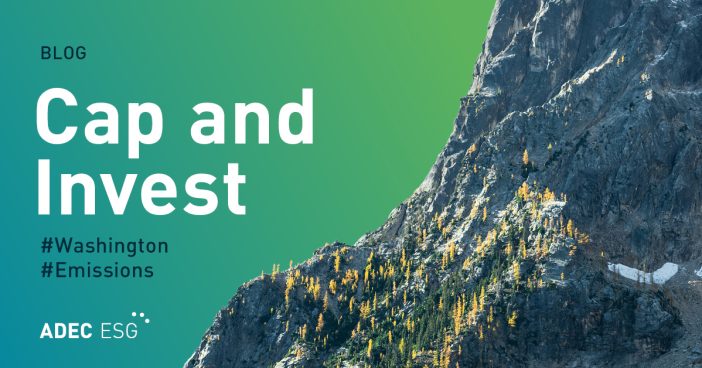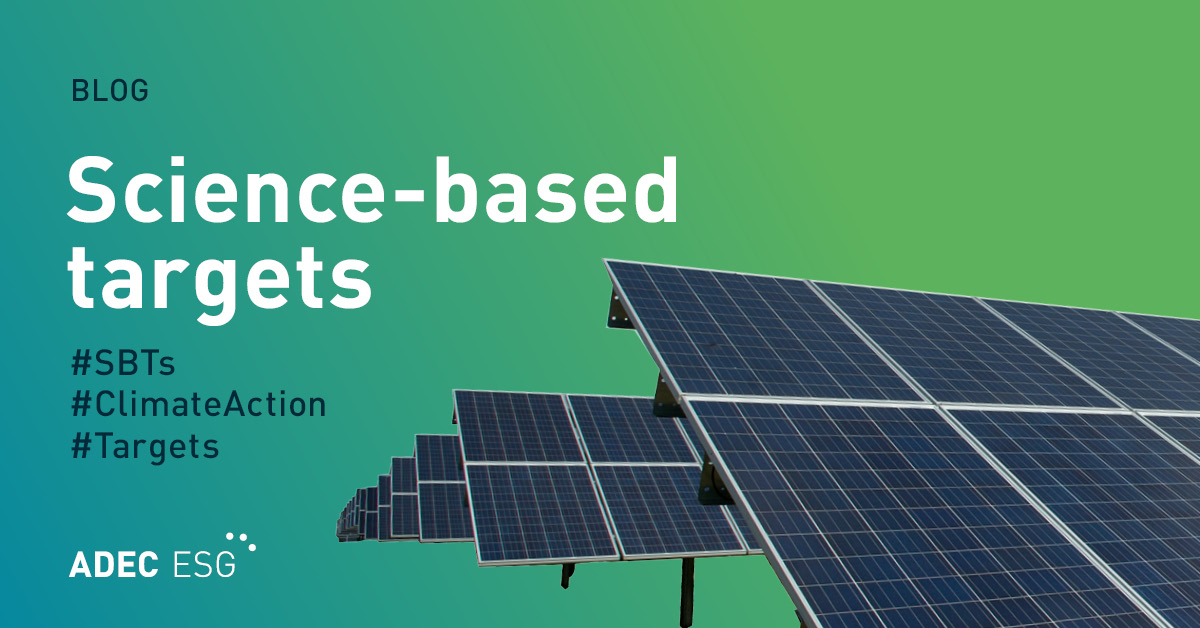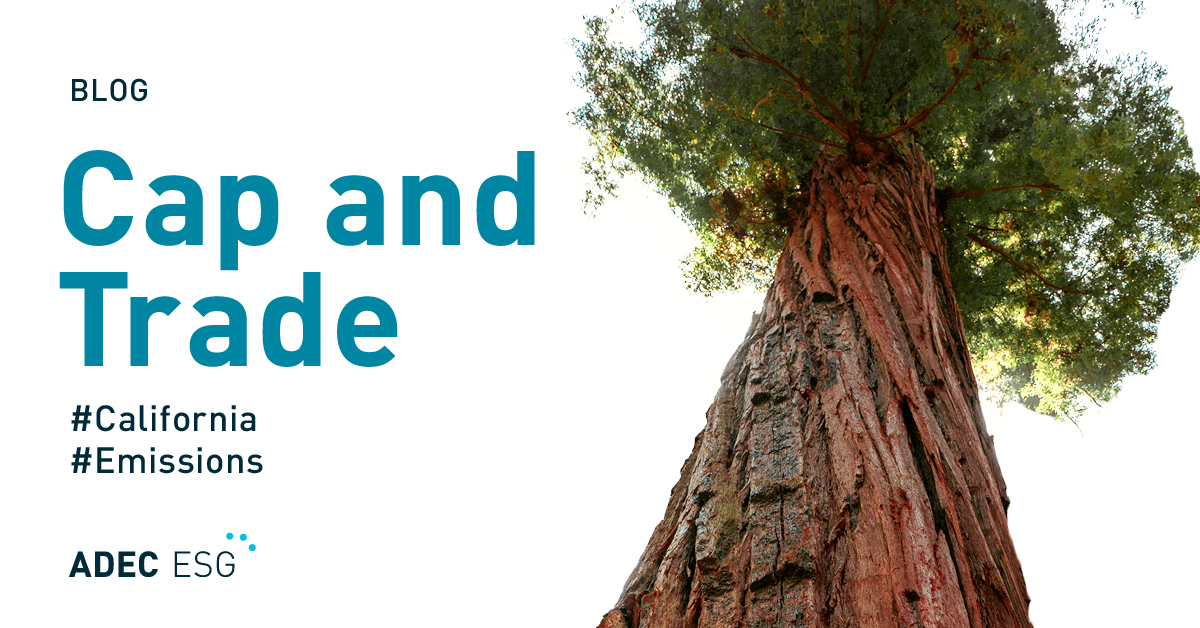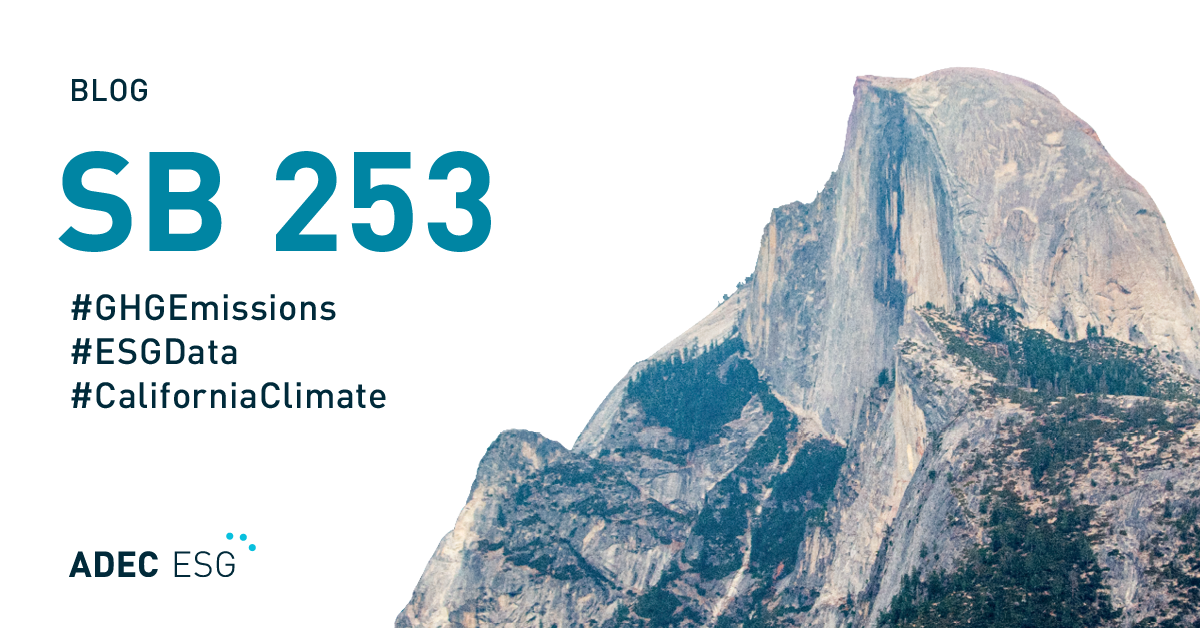In this series of articles, we discuss U.S. cap-and-trade programs, diving into the details of both long-standing and up-and-coming programs—and exploring the effects they’ve had and may continue to have on the states in which they operate. To learn more, check out our previous post on California’s cap-and-trade program.
In 2023, as a part of the state’s Climate Commitment Act, Washington launched its cap-and-invest program, which covers approximately 75% of the state’s emissions. The program requires to report GHG emissions exceeding 10,000 metric tons of CO2-equivalent (MT CO2e) per year.
What is Washington’s cap-and-invest program?
Washington’s cap-and-invest program was put in place to help the state achieve its emissions reduction goals. To accomplish this, the program sets a declining limit on major sources of greenhouse gas (GHG) emissions throughout Washington. In other words, the state sets a limit on GHG emissions that in-scope companies may emit per year, and this limit decreases until the state reaches its emissions reduction goals. These limits create economic incentives for organizations to reduce their carbon footprints and/or to purchase or obtain carbon credits.
The cap-and-invest program launched on January 1, 2023, with the first compliance deadline set for November 1, 2024, at which time businesses were required to have allowances to cover 30% of their 2023 emissions. The goal of the program is to achieve greenhouse gas limits set by the state:
- 45% below 1990 levels by 2030,
- 70% below 1990 levels by 2040,
- and 95% below 1990 levels and net-zero carbon emissions by 2050.
The cap-and-invest program requires businesses to obtain allowances equal to their covered greenhouse gas emissions. These allowances can be obtained through quarterly auctions hosted by the Washington State Department of Ecology or bought and sold on a secondary market (similar to stocks and bonds).
The cap will be reduced over time to ensure Washington achieves its 2030, 2040, and 2050 emissions-reduction targets. This also means that Washington will issue fewer emissions allowances each year.
The program differs from California’s cap-and-trade program in that it utilizes the revenue generated from the program to fund clean energy projects and invest in climate solutions, while cap-and-trade primarily focuses on trading emissions allowances to encourage entity-wide emissions reductions.
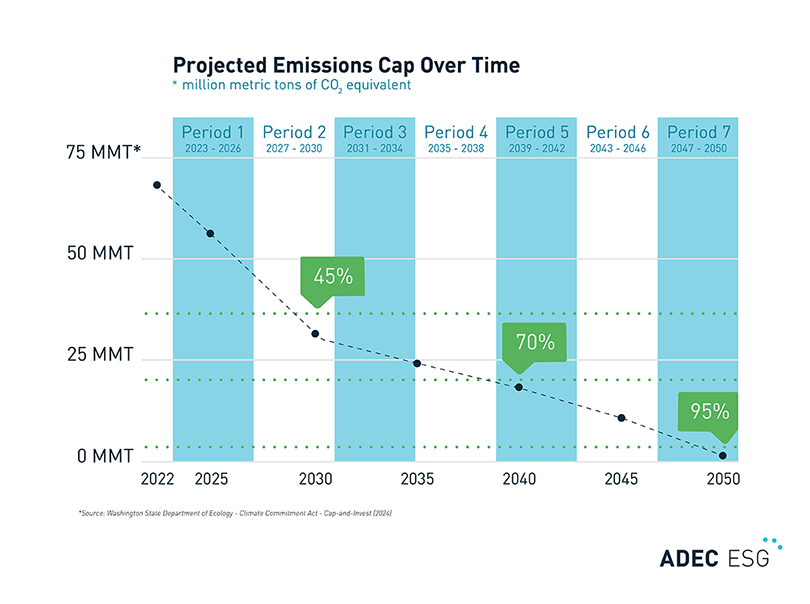
What companies are required to report?
Entities with the following operations and with emissions that exceed 10,000 metric tons (tonnes) are required to report their emissions to Washington’s Department of Ecology:
- Electricity Generation
- Adipic Acid Production
- Aluminum Production
- Ammonia Manufacturing
- Cement Production
- Electronics Manufacturing
- Ferroalloy Production
- Fluorinated Gas Production
- Glass Production
- HCFC-22 Production and HFC-23 Destruction
- Hydrogen Production
- Iron and Steel Production
- Lead Production
- Lime Manufacturing
- Magnesium Production
- Miscellaneous Uses of Carbonate
- Nitric Acid Production
- Petroleum and Natural Gas Systems
- Petrochemical Production
- Petroleum Refineries
- Phosphoric Acid Production
- Pulp and Paper Manufacturing
- Silicon Carbide Production
- Soda Ash Manufacturing
- Electrical Transmission and Distribution Equipment Use
- Titanium Dioxide Production
- Underground Coal Mines
- Zinc Production
- Municipal Solid Waste Landfills
- Industrial Wastewater Treatment
- Geologic Sequestration of Carbon Dioxide
- Electrical Equipment Manufacture or Refurbishment
- Industrial Waste Landfills
- Injection of Carbon Dioxide
What does 10,000 tonnes of GHG emissions per year look like in real terms? Review our overview of California’s cap-and-trade program.
All cap-and-invest participants are eligible to apply for allowances. Reporting and verification of GHG emissions is required by a third party once per year.
What does this mean for your organization?
Washington’s cap-and-invest program marks a pivotal advancement in the state’s efforts to combat climate change. By imposing emission caps and mandating businesses to secure allowances, the program not only incentivizes the reduction of greenhouse gases but also channels the generated revenue into innovative clean energy projects and climate initiatives. This dual approach not only curbs emissions but also fosters sustainable development. As more states embrace similar frameworks, the collective impact will be instrumental in driving significant environmental progress and securing a healthier planet for future generations.
With the right support, developing a GHG emissions reduction program for your organization can be made simple. From establishing verifiable benchmarks to setting up year-over-year GHG activity data monitoring processes, ADEC ESG can help you put together an effective program and achieve your sustainability goals. To learn more about our work on goal-setting, reducing emissions, and reporting sustainability progress, contact our team.
This blog provides general information and does not constitute the rendering of legal, economic, business, or other professional services or advice. Consult with your advisors regarding the applicability of this content to your specific circumstances.

